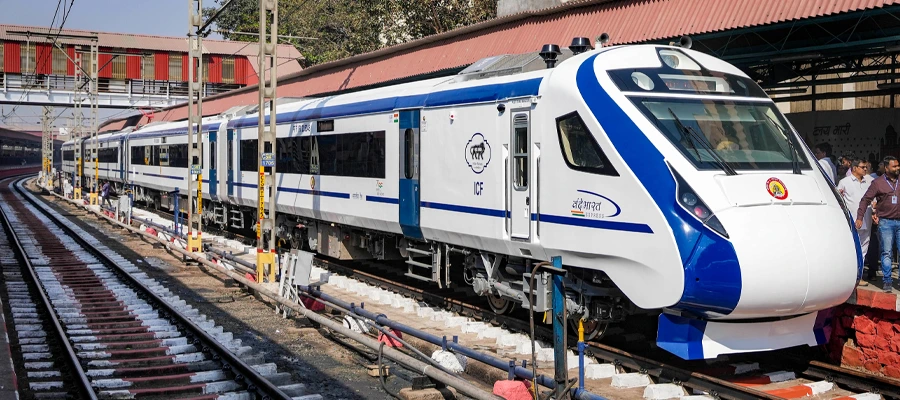The Vande Bharat Express, India’s first semi-high-speed train, has revolutionized railway travel across the country. Launched with the vision of modernizing Indian Railways, the train has significantly reduced travel times, improved passenger comfort, and strengthened connectivity between key cities. As of January 11, 2025, India operates a network of 136 Vande Bharat Express trains, covering various routes across 16 Indian Railway zones, bridging efficiency and luxury to train travel in India.
A historic beginning
The concept of the Vande Bharata Express was introduced under the “Make in India’ initiative to develop a world-class train with cutting-edge technology. The first Vande Bharat Express, also known as Train 18, was flagged off on February 15, 2019, by Prime Minister Narendra Modi, running from New Delhi to Varanasi. This train was fully designed and manufactured in India by the Integral Coach Factory (ICF) in Chennai.
The introduction of Vande Bharat was a game-changer, as it eliminated the need for locomotive engines and instead featured a self-propelled system, allowing for faster acceleration and deceleration. Since its inception, the Vande Bharat Express has continued to expand, covering more routes and connecting major cities in record time.
Revolutionizing travel, connecting key cities faster than ever
One of the biggest advantages of the Vande Bharat Express is its speed. With a top speed of 180 km/h, it drastically reduced travel time compared to conventional trains. Let's take a look at some of its key routes and how it has improved travel efficiency:
- Delhi to Varanasi- The pious city of Varanasi is now just 8 hours away from the capital, compared to the previous 12-13 hours by convention trains.
- Delhi to Katra (Vaishno Devi)- Pilgrims heading to the famous Vaishno Devi shrine can now reach Katra in 8 hours instead of 12 hours.
- Delhi to Amritsar- The journey from the capital to the Golden Temple has been cut down to 6 hours, making it a quick and comfortable option for travelers.
- Mumbai to Gandhinagar: Business and political connections between Maharashtra and Gujarat have strengthened as the travel time between Mumbai and Gandhinagar has been reduced to 5 hours.
- Chennai to Mysore: This route now takes just 4.5 hours, enhancing tourism and trade between Karnataka and Tamil Naidu.
- Mumbai to Shirdi- devotees traveling to Shirdi for Sai Baba’s blessings can now reach the pilgrimage town in 3.5 hours.
These trains are designed to provide high-speed, comfortable travel, significantly reducing journey times between major cities, and enhancing connectivity across India. The Howrah- New Jalpaiguri route strengthens Northeast connectivity, while Secunderabad-Visakhapatnam boosts between Andhra Pradesh and Telangana. Within Maharatsra the Mumbai CSTM-Solapur route ensures faster intra-state travel. The Rani Kamalapati- Hazarat Nizamuddin train connects central India to Delhi, while Secunderabad-Tirupati and Ajmer-Delhi Cantt serve pilgrims and commuters efficiently.
The train’s rapid acceleration and reduction in stoppage times have contributed to these impressive time savings, making intercity travel more convenient and efficient.
The introduction of Vande Bharat trains has significantly boosted India's Economy and environmental sustainability. By reducing the travel times these trains have stimulated trade and tourism, leading to increased business activities in connected cities. On the ecological front, Vande Bharat Express incorporates regenerative braking technology, saving up roads and air transport, and it helps lower carbon emissions and fuel consumption.
The Indian Railways aims to introduce more Vande Bharat express trains in the coming years. As per the official claims, by 2030, the goal is to operate 400 such trains across India, further improving intercity travel. Further, the focus will also be on developing a sleeper version of Vande Bharat for long-distance routes.
